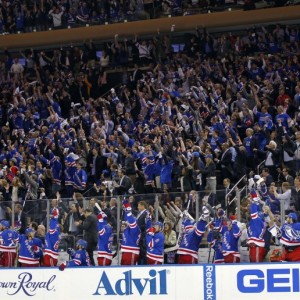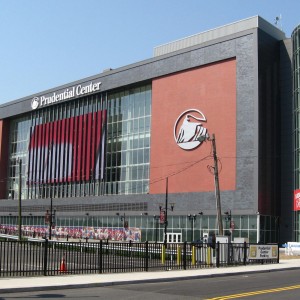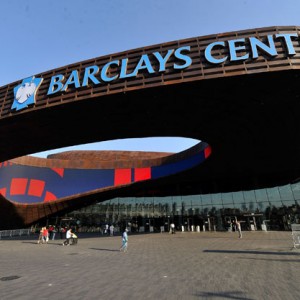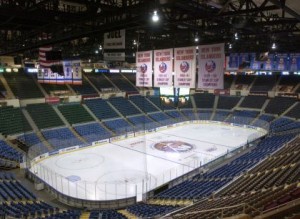The New York Yankees will host the Houston Astros Tuesday night in the American League Wild Card game. It will be the 81st game played at Yankee Stadium this season and the first postseason game since 2012 – business as usual for the 27-time World Series champs. Though a look at the stands has at times suggested anything but.
Putting the feet up on the back of the seat in front of you, no lines at the food court or restroom–it’s a baseball fan’s utopia, though far from a reality. Especially when you’re a fan of one of the most historic, iconic and recognizable brands in North American pro sports. Still, for the Yankees, soft attendance has been a reality yet again. The team averaged just under 40,000 fans in attendance according to an MLB Attendance Report via ESPN. While that number was still fourth highest in the league, far surpassing the NL East division winning-Mets, who regularly experience less than enthusiastic attendance, the activity or lack thereof in the stands has been noticeable. There’s no denying that there’s plenty to do in New York–and elsewhere to spend your money. But glaring attendance woes in the Bronx begs one to wonder if similar problems could be seen among metro area hockey fans.
Madison Square Garden and the Prudential Center combine for under 40,000 seats, so it might be a little misguided to suggest the Yankees’ attendance woes of filling a 50,000 capacity stadium could be a precursor to the similar struggles in the metro hockey scene, which will see both Devils and Islanders open at their respective home buildings on Friday, Oct. 9. The Rangers will play their first two games on the road, including opening the season on Wednesday, Oct. 7 at the defending champion Chicago Blackhawks. Two nights later, they’ll play their home opener versus Columbus–part of a home and home series with the Blue Jackets.

The Rangers shouldn’t have much trouble getting fans into MSG. The Blueshirts averaged over 18,000 fans through 41 regular season home games last season. While part of that was another banner season for New York, finishing with a league-best 113 points and going on another deep run postseason run, that saw them come within one game from advancing to the Stanley Cup Final for the second consecutive season. The Knicks, who won only 10 games at home, finished just as strong, averaging 19,812 fans through its 41 home contests. Whatever issues that have befallen the Pinstripes as of late hasn’t had an impact some 10 miles south at the world’s most famous arena. The Rangers once again figure to be a prominent contender for the Stanley Cup – so fans will have plenty of reason sell out every night.
More of the concern, though, comes from across the river and in the neighboring borough where two franchises have struggled on-ice and in the stands.

Not a lot went right for the Devils, who missed out on the postseason for the third straight season. Even Cory Schneider’s .925 save percentage couldn’t keep the team afloat in a tough Metropolitan Division. New Jersey sat at the bottom of the league in goal scoring and attendance–averaging an estimated 86.2 percent, according to an NHL Attendance report from ESPN. It was the fourth time in the last five seasons the Devils ranked among the bottom-10 teams in average attendance percentage.
A team in transition, the Devils and their fans seem sold on the continued changes in Newark, including the changing of the guard in net and upstairs in general manager Ray Shero. There are some noticeably new marketing techniques to sell the team, including players active on social media – a long time oddity under previous management, has helped in the efforts to continue to build upon the state’s lone professional sports team. The romance of much-needed change could run thin if the product can’t produce results–which would likely result in another bottom of the league finish in the standings and box office.

The New York Islanders have also brought some refreshing changes to its brand ahead of the 2015-16 season, the most obvious one is a change in venue. Gone is the ice surface in Uniondale, N.Y., at the Nassau Coliseum, the team begins its new era in Brooklyn at the Barclays Center. There, John Tavares will be looking to lead his group through another strong season after finishing with 101 points last season and advancing to the postseason for the second time in three campaigns. Recording the franchise’s highest regular season point total since 1983-84, the Islanders produced an average attendance of 15,334–nearly 95 percent full through 41 home games. The trouble for the Isles, though, could come in a new commute that will impact the fans and players alike this season.
On a good day, the commute from Long Island to Brooklyn is anywhere from 35 to 50 minutes–but with traffic and scarce parking, fans from the Island will be forced to make some major changes to their commute if they want to continue to throw their dollars at the Islanders. A burden for sure, but not lost among the players, who will be making similar adjustments this season. While the players will have to find ways to deal with the trials and tribunes of mass transit and other forms of commuting, fans might not be as willing to make the trip when the likes of say Ottawa roll in on a Monday night.

The idea of selling the team to a revitalized Brooklyn market will be important, but they’ll have some work to do. The Nets have done well since arriving to Brooklyn in 2012, averaging 17,158 in an arena that allows for a capacity of 17,732 for basketball. It’ll allow for 15,795 for hockey–including some obstructed-view seats that will be sure to garner ire from fans and media alike. If the hectic commute hurts the team’s focus or the quality of the product, it may become less tolerable for fans to forgive some of the changes that go with their new home after 43 years on L.I.
For all the discussion of attendance woes in baseball, the Yankees will be sure to have a packed house on hand for Tuesday night’s game in the Bronx. Hockey fans should arrive to their respective arenas in full throttle later this week when the regular season begins. Tread carefully though, if the heart and soul of the city can find a lull in regular fan support, with a good product–the niche-following NHL has even greater pressure to keep fans happy and engaged.